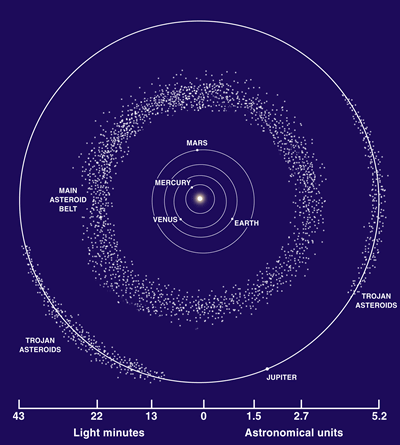Asteroid
Asteroids are celestial bodies thought to be the remnants of a star’s protoplanetary disk, from which larger planets formed. They are larger than meteors while being smaller than planets and are sometimes alternatively known as ‘minor planets’. It is thought that asteroids are mainly comprised of rocky materials. This differentiates them from comets, which are mainly made of dust and ice.
The various Solar System asteroid groups are defined by their common orbits. Most orbit the Sun in the ‘asteroid belt’, which lies between the orbits of Mars and Jupiter, some share the orbit of Jupiter (the Trojans) and some are closer to Earth (the so-called ‘near-Earth’ asteroid groups of Aten, Apollo and Amor).
The largest known asteroid is Ceres, located in the asteroid belt. Ceres is 950 km in diameter and much larger than the other asteroid belt objects, which are typically < 100 km in diameter. The larger asteroids, like Ceres, tend to be more spherical in shape, whereas the smaller ones are quite irregular and lumpy in appearance.

Credit: NASA/Lunar and Planetary Institute
Study Astronomy Online at Swinburne University
All material is © Swinburne University of Technology except where indicated.

